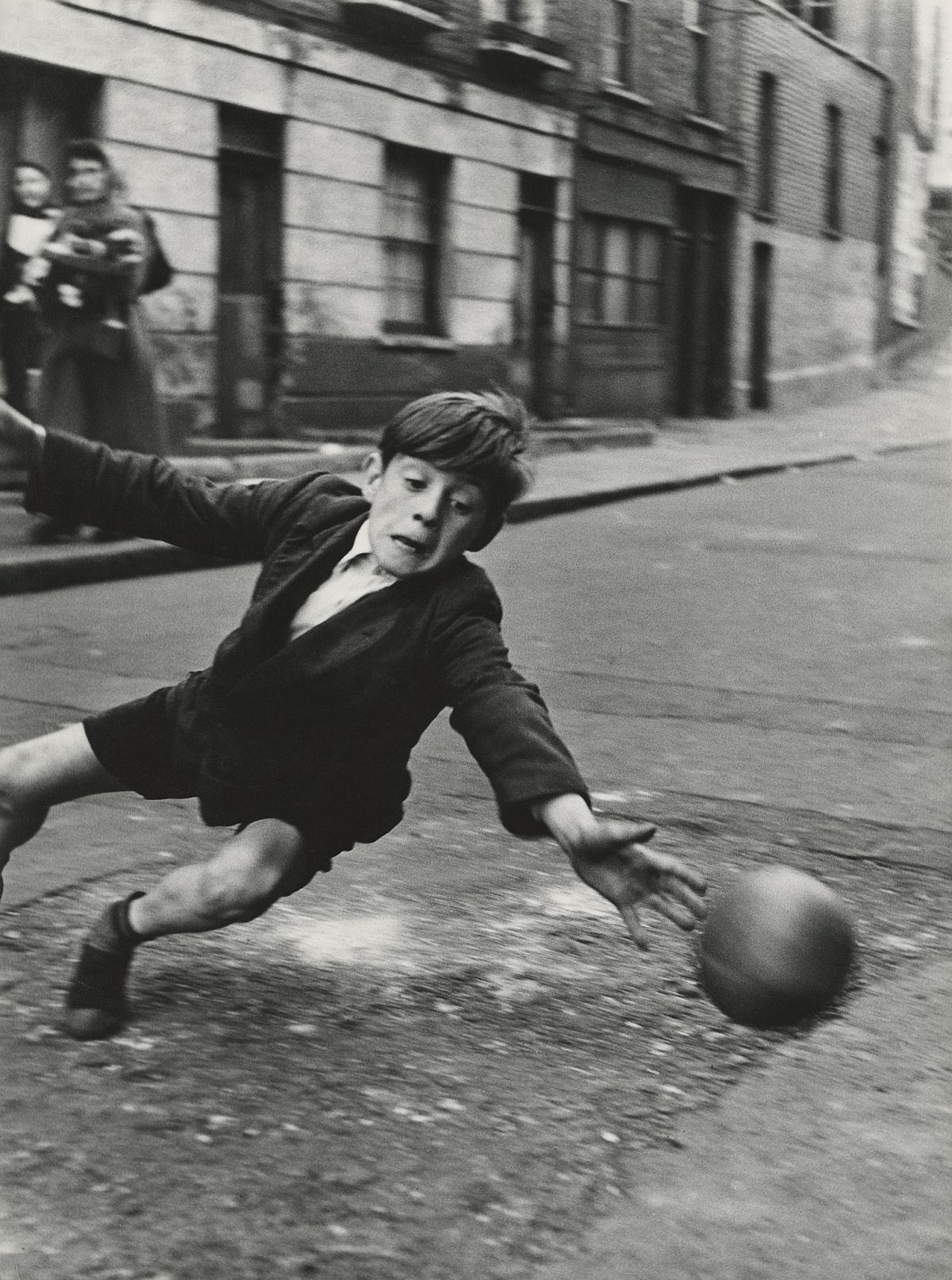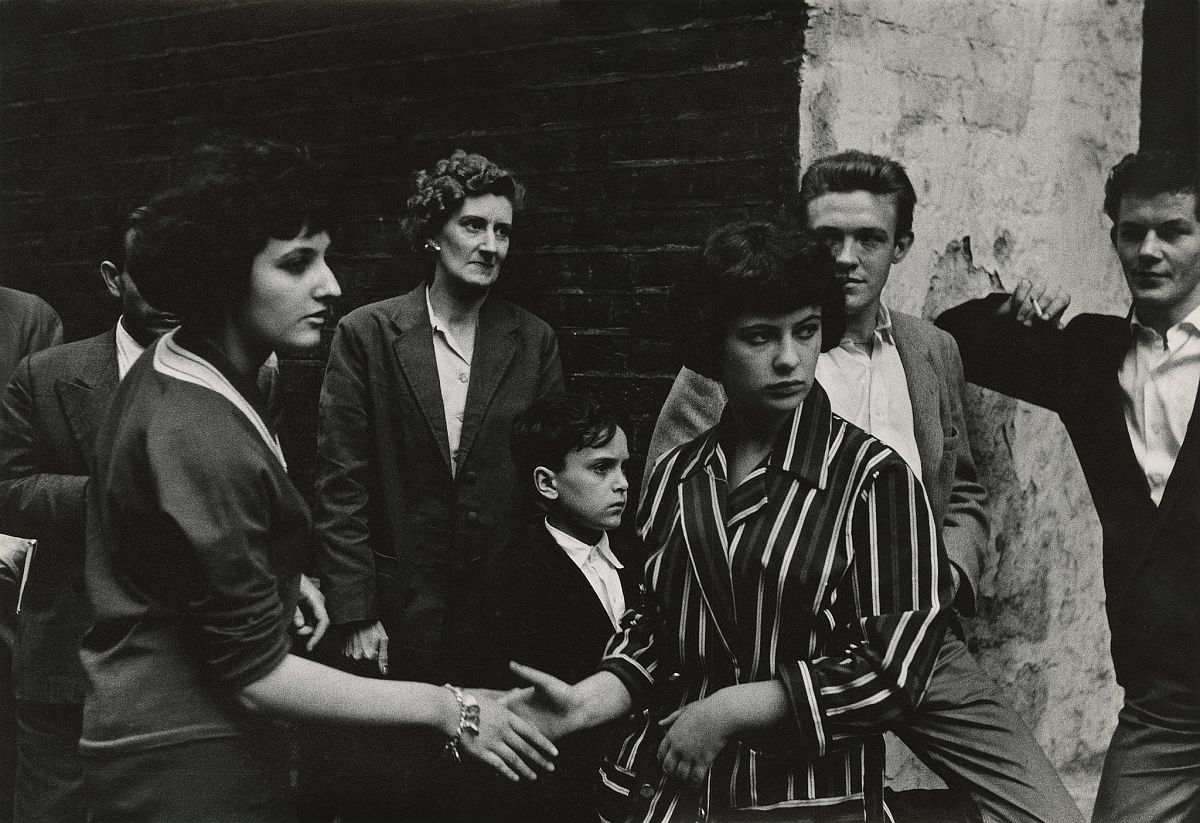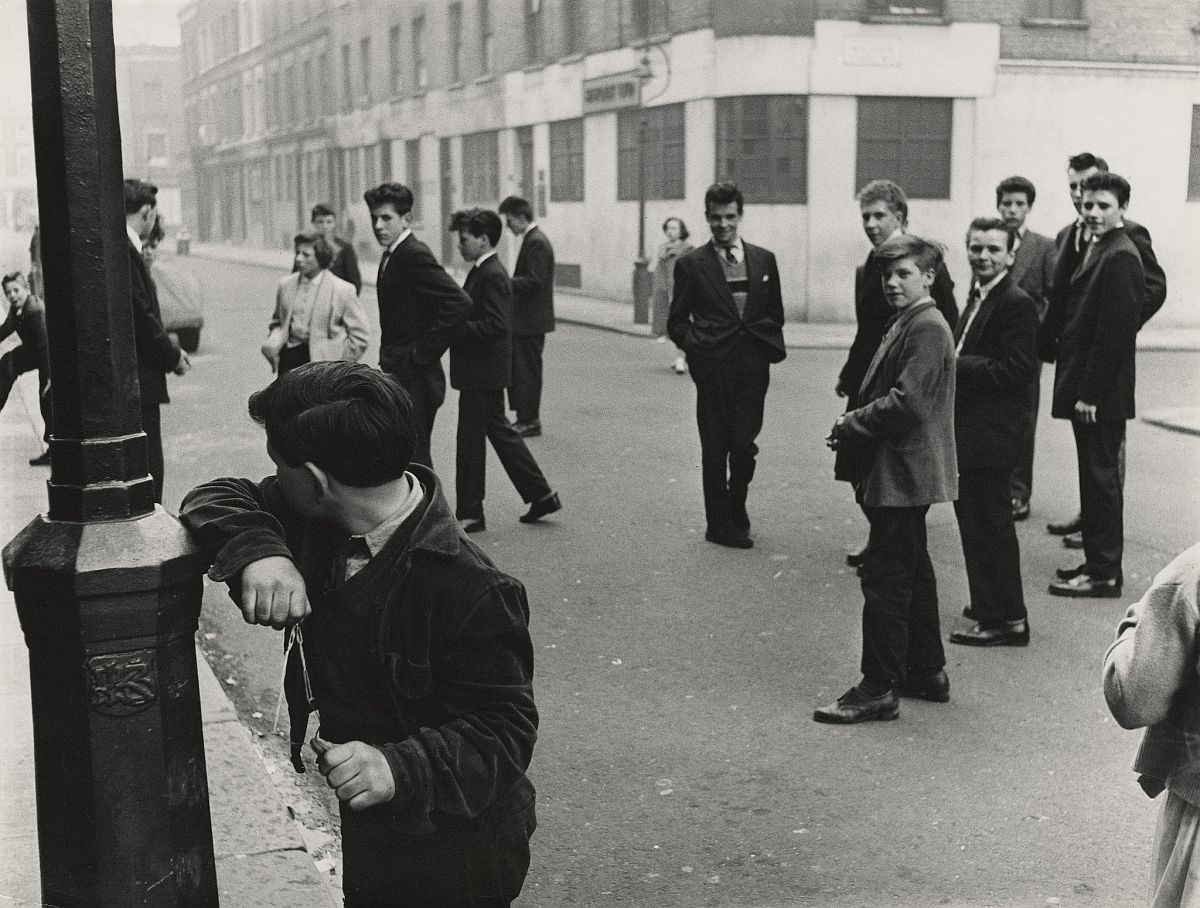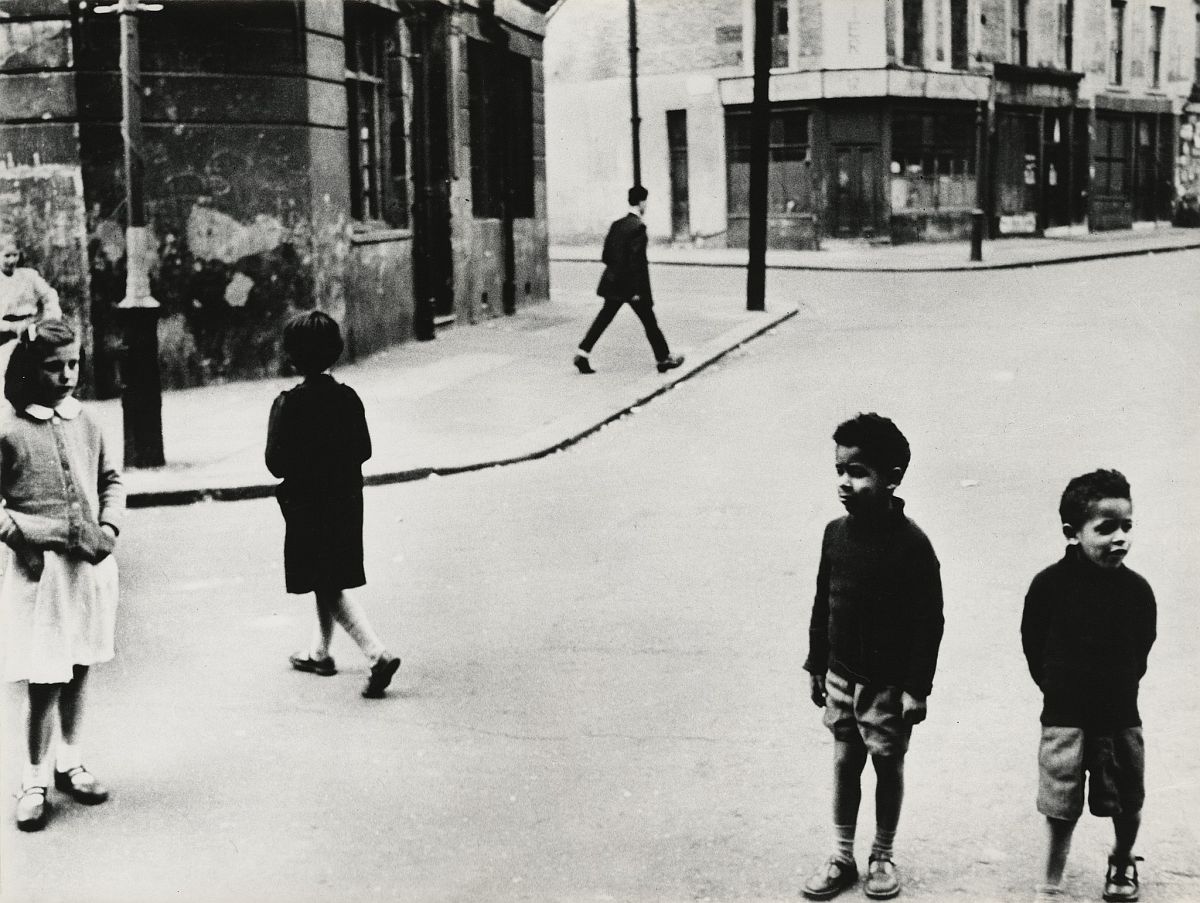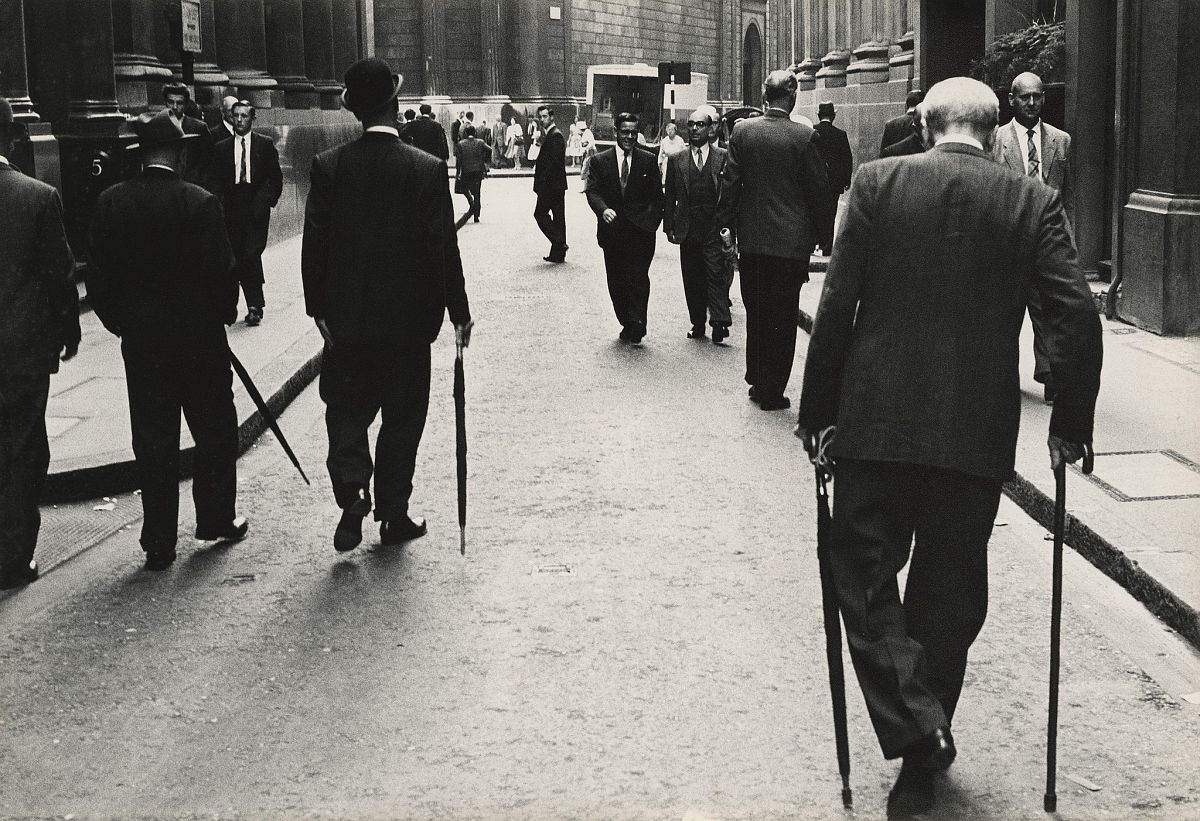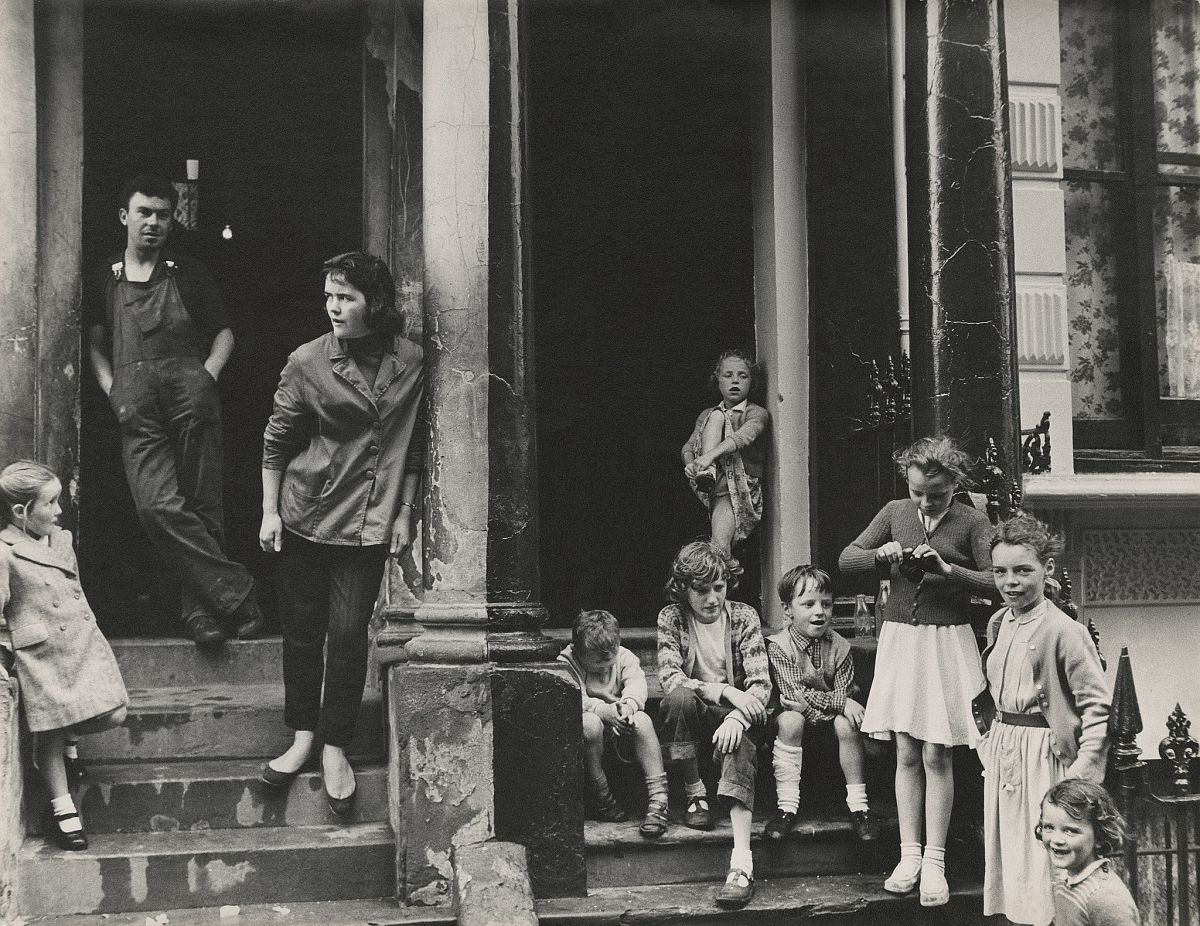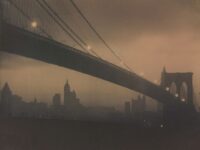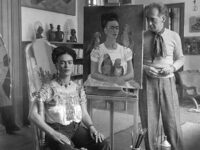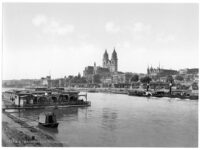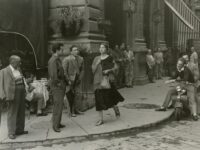This exhibition features some of the most famous images from Roger Mayne’s seminal body of work on the streets of West London and similar working-class neighborhoods of Britain in the 1950s and early 1960s that made him one of the most important post-war British photographers.
The majority of prints in the exhibition comes from Ann’s Box, a selection of prints that Roger set aside for this wife Ann Jellicoe (1927–2017) and their family. The selection began when I first visited Roger after the introduction and recommendation of his London dealer, Zelda Cheatle, who closed her gallery in London in 2005. We decided to set aside some of the last vintage prints of his most noted works. —Tom Gitterman
Roger Mayne first became interested in photography while studying chemistry at Balliol College, Oxford University from 1947-51. In 1953 he developed an interest in the St. Ives School, which embraced the abstract avant-garde movement, and became friendly with the painters Terry Frost, Patrick Heron and Roger Hilton. Mayne consciously printed with high contrast and favored large prints [for the time] and tight graphic compositions to emphasize the formal qualities in his work and have a dialogue with the painting of the time.
Mayne’s photographs evoke a particular moment in post-war Britain when hardships brought on by the war and rationing were still present. Mayne’s photographs reflect the positive community life in the streets that would soon be coming to an end with the rebuilding and modernization of many working-class neighborhoods. His images of these communities and the people: teddy boys, jiving girls and kids playing in the street, preserve the spirit of these neighborhoods. By 1959 Mayne’s images were so indicative of this period that Vogue used them to illustrate teenage styles. Colin MacInnes used one of his images on the cover of Absolute Beginners, a novel told in the first person by a teenage freelance photographer living in West London that commented on the youth culture of the time. Mayne’s photographs were subsequently used in the 1986 film of Absolute Beginners by Julien Temple as both the protagonist’s images and inspiration for the cinematography and costume design.
Mayne worked as a freelance photographer and his photographs were reproduced regularly in magazines and newspapers. His work was included in group exhibitions in the 1950s at the Combined Societies, a progressive group of local photographic societies in Britain that broke away from the Royal Photographic Society. His work was also included in Otto Steinert’s Subjektive Fotografie in Germany, a series of group exhibitions and books of international photography that emphasized personal expression and the aesthetic potential of the medium. Mayne had solo exhibitions in 1956 at the George Eastman House in Rochester, N.Y. and at the Institute of Contemporary Arts in London. As early as 1956-57 the Museum of Modern Art, New York and the Art Institute of Chicago acquired his work.
Mayne’s work has been collected by numerous institutions including: Art Institute of Chicago; Arts Council of Great Britain; Bibiliothèque Nationale; Denver Art Museum; George Eastman Museum; J. Paul Getty Museum; Los Angeles County Museum of Art; Metropolitan Museum of Art; Milwaukee Museum of Art; Museum of Fine Arts, Houston; Museum Folkwang; Museum of Modern Art, New York; National Portrait Gallery, London; National Gallery of Australia; National Gallery of Canada; National Gallery of Victoria; The Nelson-Atkins Museum of Art; Scottish National Gallery; Princeton University Art Museum; Tate Britain; and the Victoria and Albert Museum.
Though his talent as a photographer was recognized early in his career, it was his solo exhibition at The Victoria and Albert Museum in 1986 and the subsequent use of his images on album covers and concert backdrops for the musician Morrissey in the 1990s that renewed interest in his work. Most recently, Mayne’s work was recently featured in Postwar and Modern, New Art in Britain 1945-1965 at the Barbican, London in 2022; Roger Mayne at The Photographers’ Gallery, London in 2017; Roger Mayne: Aspects of a Great Photographer at the Victoria Gallery, Bath in 2013; How We Are: Photographing Britain at the Tate Britain in 2007; Making History at the Tate Liverpool in 2006 and Art of the ‘60s at the Tate Britain in 2004. This is the fifth exhibition of Roger Mayne’s work at Gitterman Gallery.
Roger Mayne
What he saved for his family
January 17 – March 25, 2023
Gitterman Gallery
3 East 66th Street, New York, NY, USA
gittermangallery.com
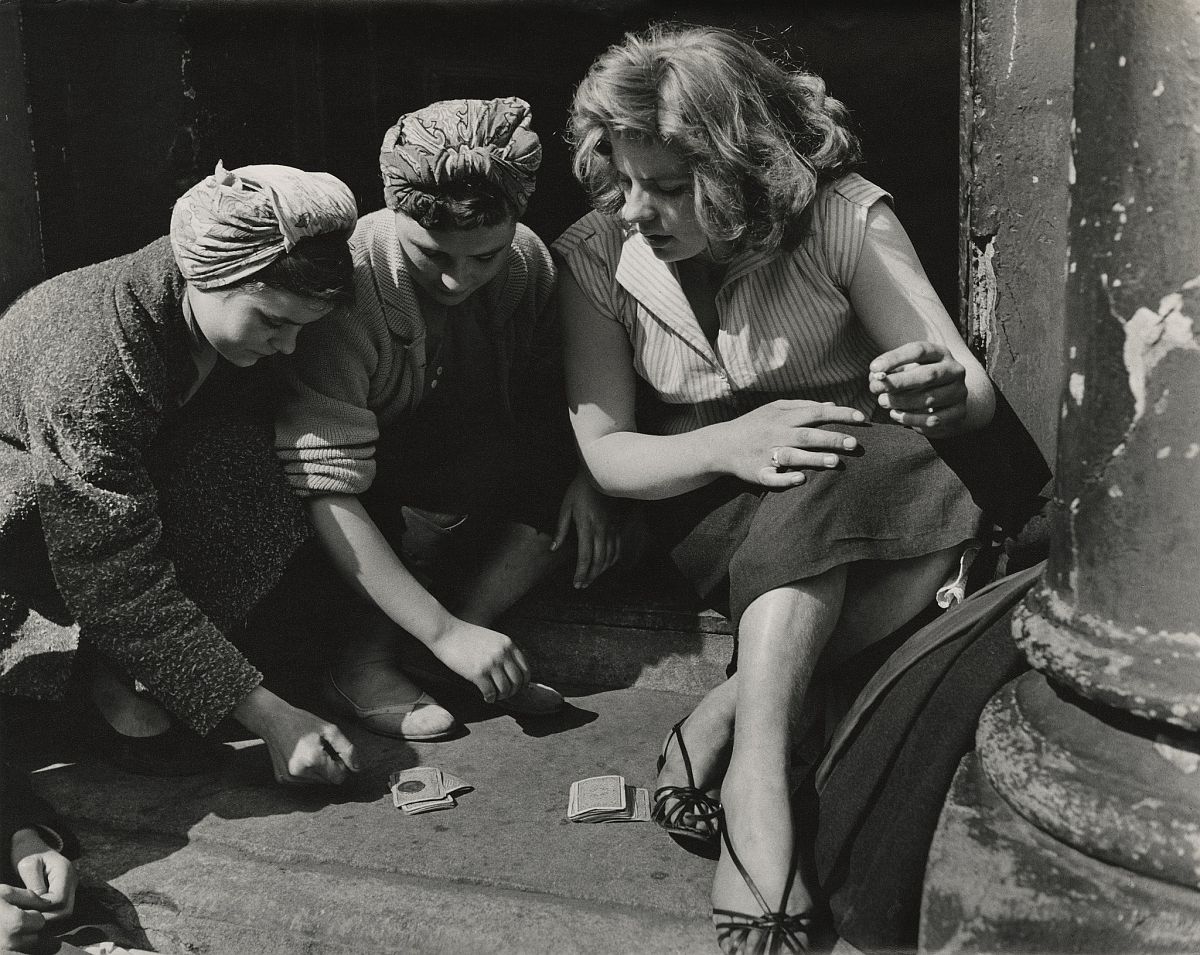
Girls Gambling, Southam Street, North Kensington, London © Roger Mayne: What he saved for his family
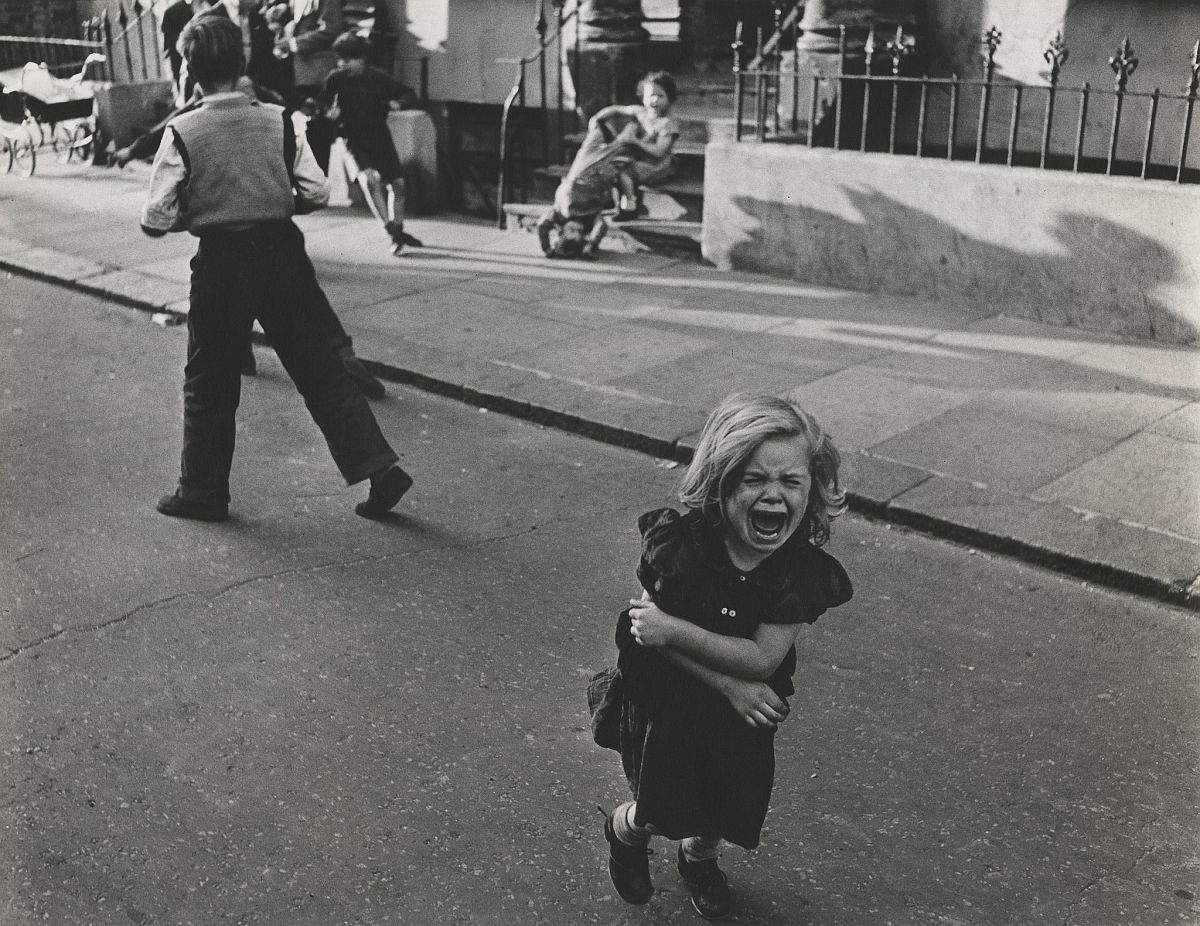
Screaming Child, Southam Street, North Kensington, London © Roger Mayne: What he saved for his family



